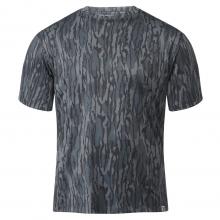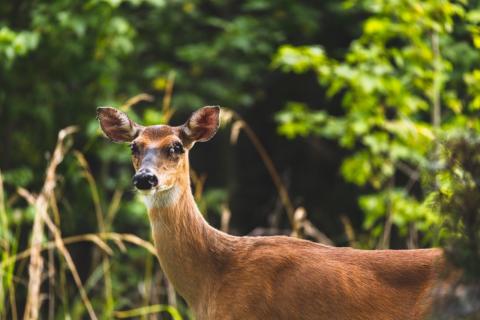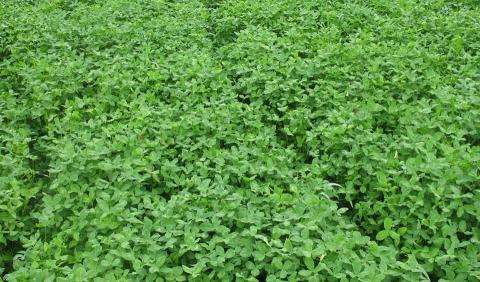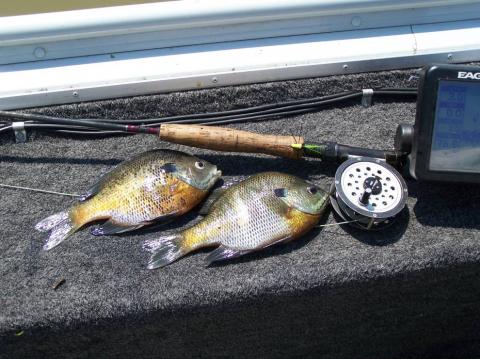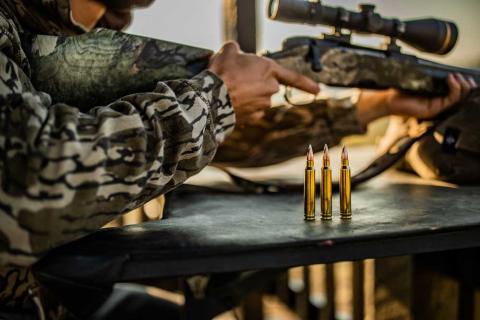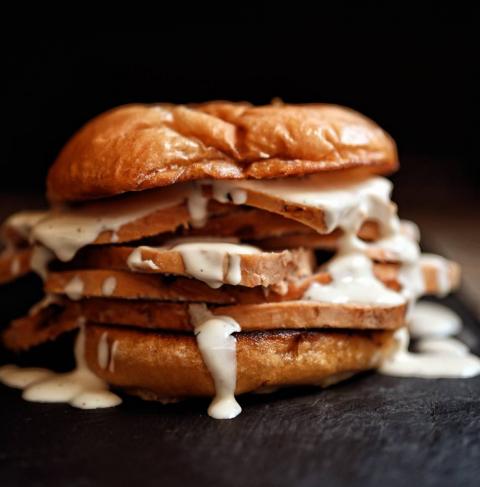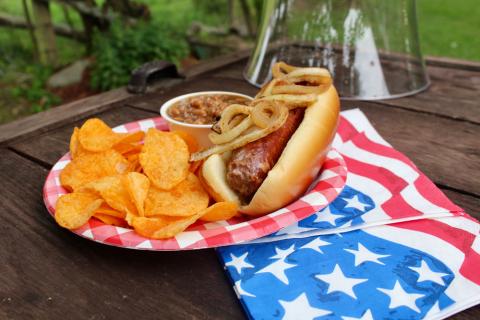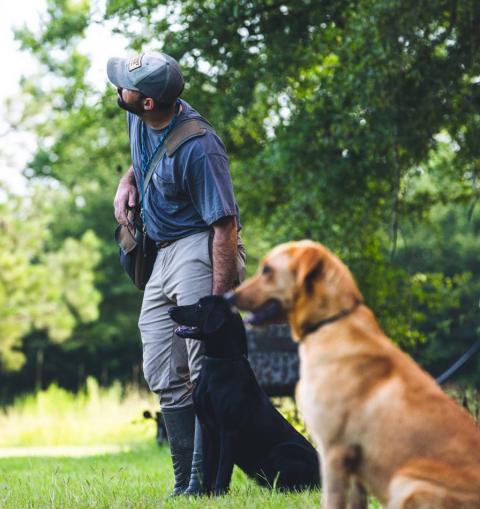
Story and photography by Damon Bungard. Follow Jaeger at @jaegertracks.
Is Tracking Harder When It’s Hot?
With early season hunts like Tennessee’s velvet buck hunt on the horizon, the question arises, is it harder to track when it’s hot?
Our opinion in yes, and it’s riskier, for various factors.
First, the biggest advice we give hunters is to wait longer, if they want to increase their chances of recovery their deer after the shot. That’s because given enough time, the vast majority of mortally wounded deer will bed and die in their first bed. The problem is, particularly with marginal archery shots, is that death may take significantly longer than the ‘wait a half hour’ often taught. Then combine that with the perception and urgency in the heat of the early to retrieve game before it may spoil in the heat, and the result is an increase in the number of jumped wounded deer that would otherwise be found dead if left alone with enough time to pass. Quartering shots, which often happen in archery from an animal spinning from the sound of the shot, in particular often take 4-6 hours to expire. So when that deer is tracked too early by the hunter and jumped, it can run a long way, making odds of recovery go down, even with a tracking dog.
The second big risk is heat itself, for both the dog and the handler, and any hunters trying to keep up on a track. Dogs simply do not do well in hot and humid conditions and overheat quickly during a track, which is very hard work. It’s made harder by their panting, their only means of cooling off (remember dogs don’t sweat like we do), and when a dog is panting heavily, it’s ability to smell is reduced, making tracking harder. Many tracking teams simply won’t track in heat with high indexes as it’s a formula for heat stroke for either the dog or the handler.
Another big risk is venomous snakes. Once Fall hunting seasons roll in, venomous snake activity like from copperheads, cottonmouths or rattlesnakes drops to almost no risk once lows are in the 40’s. But when lows are in the 70’s, or temps in the 80’s, that’s prime conditions for nocturnal snake activity, and they’ll often be living in the same cooler, wetter conditions those deer you’re hunting are.
From a scent perspective, cool and moist is better than hot and dry. Early season conditions are often very hot, scent is broken down quickly, and I’ve even seen ants eating blood feet up a tree within hours of a shot. So for the hunters out there taking advantage of patternable early season velvet bucks, please remember to make that shot count, and give it as much time as you can after. You’ll have much better chances of a tracking team coming to help if you do, and respect the risks they’re taking to help you recover your trophy.
It’s still possible to track them successfully even 24 hours later, and every once in a while you might get lucky and get to cool off in a cold creek at the end. Case in point here with Jaeger Tracks:






